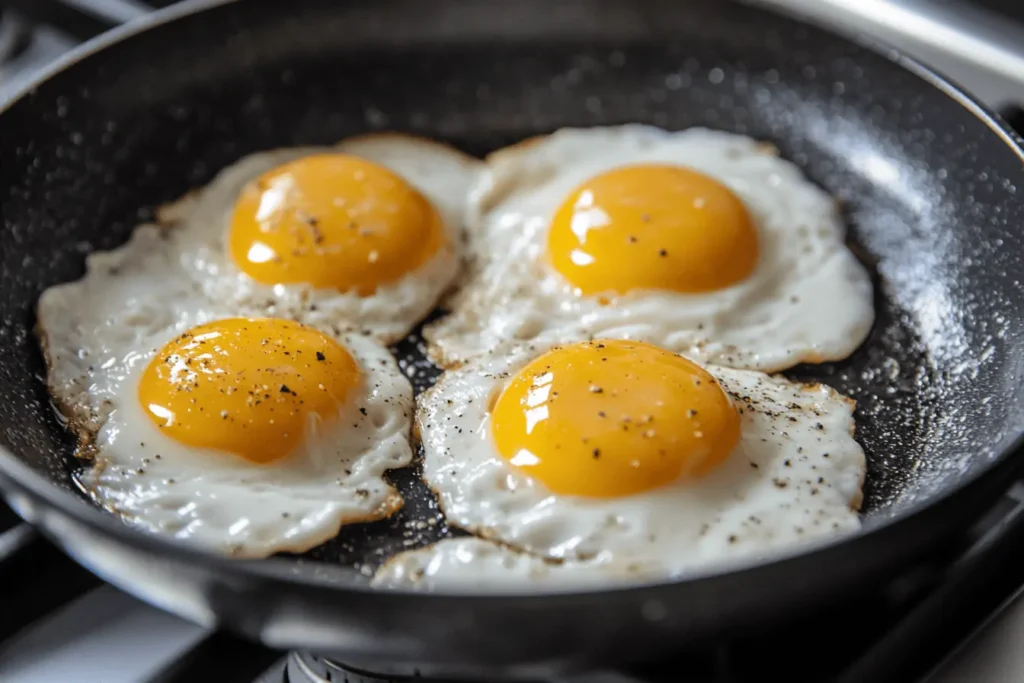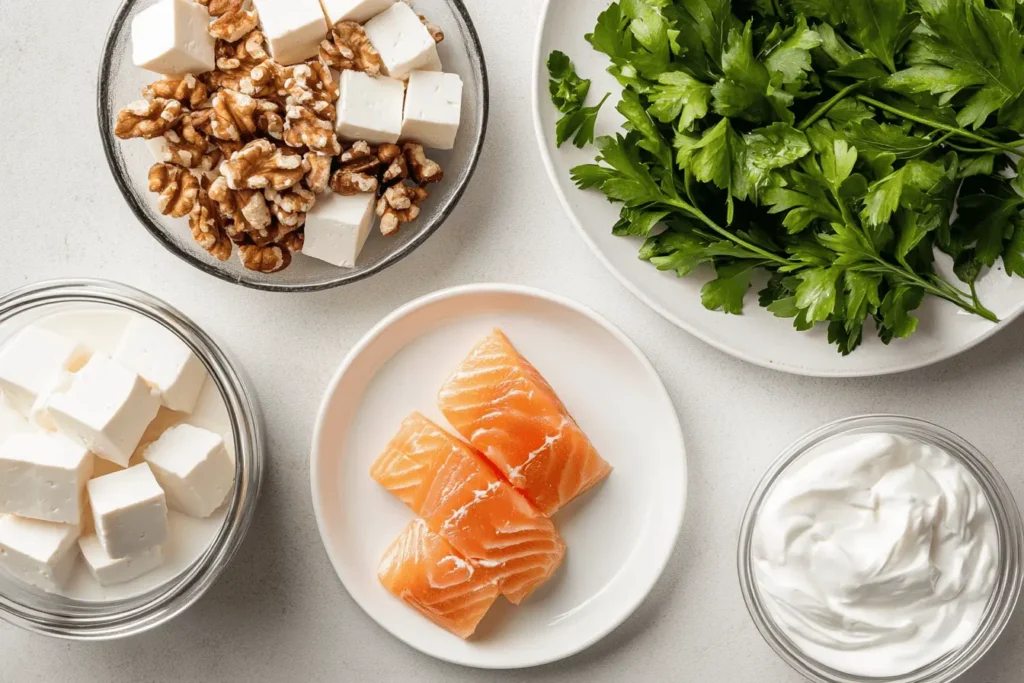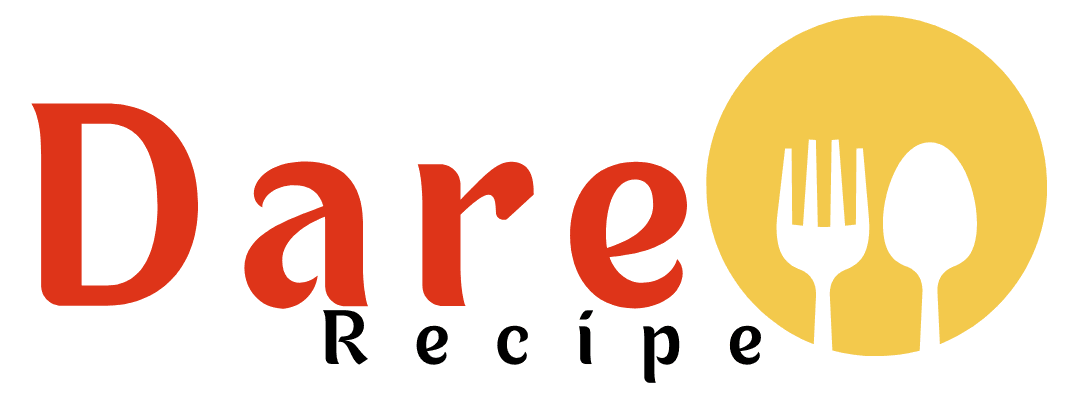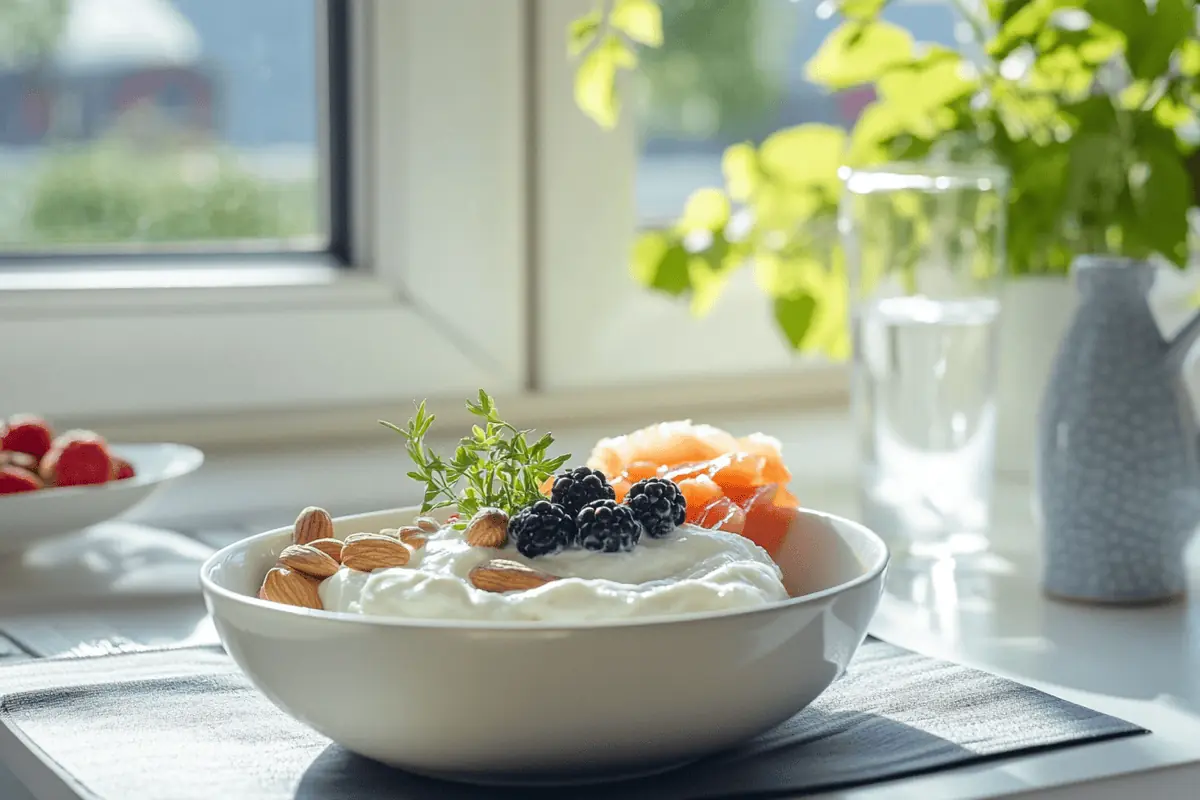Starting your day with a protein-packed breakfast sets a solid foundation for your health and wellness journey. Many people wonder, how can I get 40g of protein for breakfast? A high-protein morning meal helps maintain steady energy, manage hunger, and support lean muscle growth. In addition, focusing on sufficient protein intake at breakfast can improve your overall eating habits throughout the day.
To consistently achieve a 40g protein breakfast, consider mixing multiple foods that offer various protein benefits. For example, combine Greek yogurt with egg whites, or pair cottage cheese with smoked salmon. By exploring different ingredients, you can create satisfying, protein-rich meals that suit your taste preferences. In addition, integrating recipes like Spinach and Feta Omelet with Greek Yogurt or High-Protein Oatmeal with Peanut Butter from our site can help you reach your protein targets more easily. After all, understanding how can I get 40g of protein for breakfast? is the first step toward building a healthier routine.
Table of Contents
Why Aim for 40g of Protein at Breakfast?
Many people ask, how can I get 40g of protein for breakfast? This amount may seem high, but there are good reasons to aim for it. First, a protein-rich breakfast helps stabilize your blood sugar. Therefore, you feel more satisfied and experience fewer energy crashes. In addition, starting your day with ample protein can help support muscle repair and growth.
Moreover, hitting a 40g protein target reduces mid-morning hunger. As a result, you are less likely to reach for sugary snacks. This balanced approach encourages a healthier overall diet. It can also help with weight management by keeping you full and reducing cravings. Over time, prioritizing protein may improve your body composition and support long-term wellness.
Identifying High-Protein Breakfast Foods
If you want to know how can I get 40g of protein for breakfast? start by identifying the best protein-rich foods. Consider these options:
- Egg whites: They offer lean protein and adapt well to various recipes.
- Greek yogurt: Packed with protein and versatile, perfect for sweet or savory dishes.
- Cottage cheese: Creamy and high in protein, pairs well with fruit.
- Smoked salmon: Rich in protein and healthy fats, elevates simple dishes.
- Whey protein powder: Quick and easy to blend into smoothies or oats.
- Tempeh or tofu: Ideal for plant-based diets, firm and easy to cook.
- Chicken breast or turkey slices: Lean meats that add savory flavor.
Integrating these foods into your morning meal helps ensure you reach the 40g protein goal. For example, a single cup of Greek yogurt contains around 20g of protein. Add a scoop of whey protein, and you easily approach 40g. The key is mixing and matching foods that complement each other.
Combining Multiple Protein Sources
To reach 40g, consider combining several protein sources. For instance, pair scrambled egg whites with Greek yogurt. Add a spoonful of nut butter or a handful of nuts for extra protein and healthy fats. Alternatively, prepare an omelet with egg whites, smoked salmon, and a side of cottage cheese.
Likewise, a plant-based option might include tofu scramble, lentils, and a high-protein plant-based yogurt. Another strategy is to add a protein powder to your morning coffee or tea. Use it as a creamer alternative, and you boost your intake without extra effort.
By combining two or three protein sources, you create a meal that is both delicious and satisfying. This approach also ensures variety, so you never get bored. Over time, you will find the perfect combination that fits your palate and routine.
Quick and Easy High-Protein Breakfast Ideas
When you wonder how can I get 40g of protein for breakfast? you may think it requires complex recipes. However, simple ideas can make achieving this goal straightforward:
- Protein Smoothie:
- Ingredients: 1 scoop whey protein (~25g), 1 cup Greek yogurt (~20g), and 1/2 cup berries.
- Total Protein: Approximately 45g.
- Egg White Scramble with Salmon:
- Ingredients: 6 egg whites (~20g), 2 ounces smoked salmon (~12g), and 1/2 cup cottage cheese (~14g).
- Total Protein: Approximately 46g.
- Overnight Oats with Whey Protein:
- Ingredients: 1/2 cup oats (~5g), 1 scoop whey protein (~25g), and 1 cup Greek yogurt (~20g).
- Total Protein: Approximately 50g.
- Tofu Veggie Scramble with Beans:
- Ingredients: 1 cup crumbled tofu (~20g), 1/2 cup black beans (~7g), and a small side of Greek yogurt (~10g).
- Add a tablespoon of hemp seeds (~3g).
- Total Protein: Approximately 40g.
These quick meals showcase how easy it is to reach your protein targets. Moreover, each recipe can be customized with spices, herbs, or vegetables. By experimenting, you create meals that are both nutrient-dense and flavorful.
Cooking Techniques to Boost Protein Intake
If you ask how can I get 40g of protein for breakfast? consider cooking techniques that maximize protein content. First, focus on lean, protein-rich ingredients and limit added sugars or fats. For example, use non-stick pans and minimal oil to keep calories manageable.
In addition, try poaching or boiling eggs instead of frying them. This method keeps dishes lighter while preserving protein quality. For oatmeal, stir in whey protein after cooking. This prevents clumping and maintains a creamy texture. Moreover, adding cottage cheese to pancake batter boosts protein content without compromising flavor.
Finally, batch cook protein sources in advance. Prepare grilled chicken, roasted tofu, or cooked lentils and store them in separate containers. In the morning, combine pre-cooked proteins with fresh produce. This streamlined approach makes it simple to hit 40g of protein, even on busy mornings.

Planning Your Week for Success
Consistency is crucial. To reach 40g of protein every morning, plan ahead. Start by mapping out a weekly breakfast menu. For example, Monday might feature Greek yogurt with whey protein. Tuesday could be egg whites and salmon. Wednesday might focus on tofu scramble with beans and avocado.
Write down shopping lists and keep your kitchen stocked with lean proteins. Store them in clear containers. Place them at eye level in your fridge so you never forget. Freeze extra portions of cooked chicken or tofu for easy access. Meal prepping saves time, reduces waste, and ensures you always have high-protein ingredients ready.
Moreover, planning prevents decision fatigue. When you know exactly what to eat, you are less likely to skip breakfast or opt for sugary pastries. Over time, these habits become second nature, simplifying your routine.
Understanding Portion Sizes and Macronutrient Balance
Achieving how can I get 40g of protein for breakfast? also involves balancing macronutrients. Ensure you include some healthy fats and fiber-rich carbs. For example, pair Greek yogurt and egg whites with a small handful of almonds and some berries. This combination provides energy and helps with digestion.
Keep portion sizes in check. While protein is essential, consuming too much may not provide extra benefits. Aim for around 40g to 45g at breakfast and adjust as needed. If you find 40g too filling, start with 30g and gradually increase. On the other hand, if 40g feels too little, consider adding a second source like cottage cheese or an extra egg white.
Tracking macros for a few days can help you understand your needs. Eventually, you will learn what a 40g protein breakfast looks like without measuring. This skill makes it easier to maintain a balanced diet long-term.
Practical Tips for Sticking to Your Goals
Staying committed to a 40g protein breakfast requires discipline. However, simple strategies make it easier:
- Set a reminder: Place a note on your fridge or kitchen counter.
- Prepare ingredients in advance: Chop veggies, measure portions, and store them in containers.
- Keep it interesting: Rotate protein sources and recipes weekly.
- Use tools: A kitchen scale and measuring cups help ensure accuracy.
- Celebrate small wins: Each time you hit your target, acknowledge your success.
Additionally, consider sharing your goals with a friend or family member. They may join you or provide support. Over time, enjoying your protein-packed mornings becomes a habit rather than a chore.
Building Balanced Breakfast Recipes
To reach your 40g protein target, consider these balanced recipe ideas. Each integrates various flavors and nutrients, so you never get bored:
1. Savory Cottage Cheese Bowl:
- Ingredients: 1 cup low-fat cottage cheese (~28g), 2 ounces smoked salmon (~12g).
- Add a handful of cherry tomatoes and spinach.
- Drizzle with lemon juice and fresh herbs.
- Total Protein: ~40g.
- Serve with a slice of Whole-Grain High-Protein Bread from our site for extra fiber.
2. Peanut Butter Banana Greek Yogurt Parfait:
- Ingredients: 1 cup Greek yogurt (~20g), 1 scoop whey protein (~25g).
- Stir in 1 tablespoon peanut butter (~4g) for a total over 40g.
- Top with banana slices and flax seeds for fiber.
- Total Protein: ~49g.
3. Lentil and Egg White Breakfast Wrap:
- Ingredients: 1/2 cup cooked lentils (~9g), 4 egg whites (~14g), 1/2 cup Greek yogurt (~10g).
- Add 2 ounces turkey breast (~12g).
- Wrap in a whole-grain tortilla.
- Total Protein: ~45g.
These recipes show that breakfast can be both delicious and protein-rich. Therefore, do not hesitate to experiment with seasonings, sauces, and garnishes that enhance flavor.

Lifestyle Factors That Support High-Protein Breakfasts
Even if you know how can I get 40g of protein for breakfast? there are other factors to consider. Lifestyle elements influence your ability to maintain this habit:
- Sleep: Getting enough sleep supports healthy hunger hormones and can reduce cravings.
- Stress management: High stress may lead to poor food choices. Practice meditation or gentle exercise.
- Exercise: Regular physical activity complements a high-protein diet, supporting muscle growth and repair.
- Hydration: Drinking enough water aids digestion and may reduce unnecessary snacking.
A well-rounded lifestyle makes it easier to stick to your protein goals. Over time, these positive habits reinforce each other, creating lasting change.
Frequently Asked Questions
How to eat 40 grams of protein at breakfast?
To eat 40 grams of protein at breakfast, combine multiple high-protein foods. For example, mix Greek yogurt with protein powder and add a side of egg whites. Another option is an omelet made from egg whites, smoked salmon, and cottage cheese. Alternatively, choose plant-based proteins like tofu and beans, supplemented with a plant-based yogurt. Planning your meals and prepping ingredients in advance ensures you achieve this target daily.
What foods equal 40 grams of protein?
Several combinations of common foods reach 40 grams of protein. For instance, 1 cup of Greek yogurt (~20g) plus a scoop of whey protein (~25g) exceeds 40g. Six egg whites (~20g) plus 2 ounces of smoked salmon (~12g) and a 1/2 cup cottage cheese (~14g) also surpass 40g. Lentils, tofu, tempeh, low-fat cottage cheese, turkey, chicken breast, or ham slices can be mixed and matched to hit the 40g mark.
What breakfast foods are high in protein?
High-protein breakfast foods include egg whites, Greek yogurt, cottage cheese, smoked salmon, turkey breast, tempeh, tofu, and protein powder. Additionally, chia seeds, hemp seeds, nuts, and nut butters add a small protein boost. Lean meats and legumes also provide ample protein. By pairing these foods thoughtfully, you create balanced, nutrient-dense meals that meet your protein goals.
What does 30g protein breakfast look like?
A 30g protein breakfast might include 1 cup Greek yogurt (~20g) and 2 egg whites (~7g), plus a sprinkle of hemp seeds (~3g). Another example: a scoop of whey protein (~25g) mixed into oats (~5g) for a total around 30g. The main difference between 30g and 40g is adjusting portions or adding another protein source. With a 30g goal, you might rely on fewer ingredients or smaller servings.

